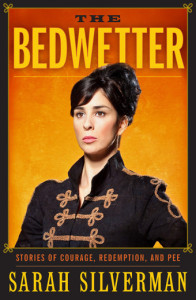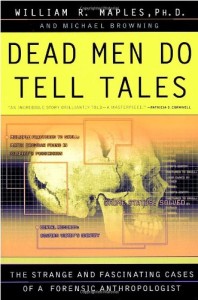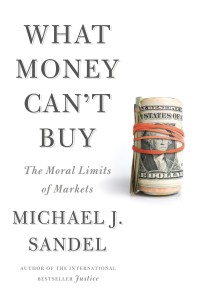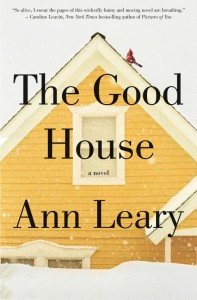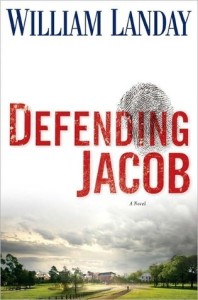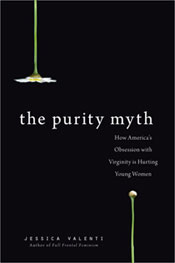
This is a nearly impossible review to write, as this book is amazing, infuriating, and endlessly quotable. I like to write in my books (I know, the horror), underlining passages, commenting on paragraphs, dropping the occasional “the FUCK” in the margins, and fiendishly circling page numbers so I know which ones REALLY need to be remembered. In the case of this book, nearly every page has at least one passage underlined. And I was being conservative with my pen.
Jessica Valenti is a feminist who has spent much of her life spreading the (shockingly controversial) idea that women deserve social, political and economic equality. This doesn’t just mean that she supports the basics like, say, equal pay for equal work; it means she explores the real issues that affect women on a regular basis. She examines the systemic issues, the roots of discriminatory treatment, and makes connections that initially seem obtuse but, given her thorough research and excellent ability to connect the dots, become clear and obvious to anyone willing to think critically.
I read her book Full Frontal Feminism this fall, and plan to read Why Have Kids at some point this year. But this book has caused my blood pressure to rise so much that I think I need a palate cleanser to clear my mind of the absurdity of the anti-feminist movement.
As the subtitle of The Purity Myth suggests, Valenti’s book explores “how America’s obsession with virginity is hurting young women.” The overall thesis can be summed up pretty well with this quote:
“For the record: I think virginity is fine, just as I think having sex is fine. I don’t really care what women do sexually, and neither should you. In fact, that’s the point. I believe that a young woman’s decision to have sex, or not, shouldn’t impact how she’s seen as a moral actor.”
There is so much good in this book that I clearly won’t be able to do it justice. But I’m going to try to point out some of the things that make it so great. Valenti doesn’t (as some of her more ignorant critics claim) propose women go out and have a lot of sex. She doesn’t propose that women not have sex, either. Instead, she chooses to frame the discussion around why women are judged based on *not* having sex, while men are judged on other things. As she puts it in the first paragraph: “It’s time to teach our daughters that their ability to be good people depends on their being good people, not on whether or not they’re sexually active.”
Anyone who has attended high school in America can probably almost immediately bring to mind the image of a classmate who was a ‘slut,’ and, as such, not a ‘good’ person. I find it embarrassing to think back to how sexual activity was used as a proxy for determining the (negative) value of an entire human. It wasn’t always the case; not having had sex (at least at my high school) didn’t peg someone as good or bad, but there were definitely some people who were talked about.
Valenti focuses on all the different ways this idea of purity hurts women of all ages. Many of you are probably familiar with the Madonna / Whore dichotomy (possibly thanks to a scene from Sex and the City featuring Charlotte talking to Trey about her sexual needs); Valenti looks at the way it is reinforced on a regular basis through all sorts of different venues, and how that hurts all women. And if you think about it, it makes perfect sense: if my value is tied up in whether or not I still have an intact hymen, that implicitly means that nothing else I do matters. If all that I am good for is staying ‘pure’ for my future husband then there’s no need for me to access any other opportunities, like, say, a solid education or a career.
The first chapter in the book – and the one that disturbed the heck out of me – focuses on Purity Balls and virginity worship. These FEDERALLY FUNDED displays of paternal ownership reek of creepy incestuous relationships, but operate under the guise of helping young women to ‘save’ themselves, with their fathers promising to protect their virtue. Again, as though a girl’s virtue can be found between her legs and not in her brain.
From here, Valenti discusses many more related topics in fascinating and disgusting detail, including: the dangers of abstinence-only education; the racial and economic implications of the fact that some women are already seen as ‘spoiled’ by virtue of the way they look or the community in which they live; the misinformation spread by anti-feminist organizations; the way that purity is sexualized, contributing directly to the objectification of young women; and myriad other interconnected topics. From an exploration of how society has decided only certain women can be raped, to how this traditional understanding of purity leaves out many people from the get go (where do lesbians fit in, for example?), Valenti hits each topic directly, using straightforward language backed up by solid research and a whole lot of facts.
Some of the best writing is in the area of sexual assault. I dare you to read chapter five without either throwing the book at a wall or at least going to the liquor cabinet for a stiff drink because it is BLEAK.
But it is so important. I plan to gift this book (along with Full Frontal Feminism) to my nieces and nephews when they are old enough, because the information is important, and it isn’t just up to women to change these bizarre notions of a woman’s worth. While some readers may have tuned out at my first mention of feminism, consider picking it up – whether you are a woman or a man, this book will open your eyes and hopefully motivate you to action.
